Blue-and-White Octagonal Plate with Figures and Landscape Patterns from the Late Ming to Early Qing Dynasties | A Paragon of Early Qing Dynasty Blue-and-White Porcelain
[Overview of the Collection]
This is a blue-and-white octagonal plate with figures and landscape patterns from the late Ming to early Qing dynasties, a classic work of early Qing dynasty blue-and-white porcelain. The plate is in a regular octagonal shape, with a firm and fine body and a warm and moist glaze. The blue-and-white pigment has a stable and elegant color, and the pattern layout is well – spaced, integrating practicality and artistic value. It witnesses the inheritance and evolution of porcelain – making techniques from the late Ming to early Qing dynasties and is a precious physical object for the collection of Oriental classical aesthetics.
[Analysis of the Shape]
-
Octagonal Shape: The plate is in a standard octagonal shape, with the edges and corners having soft yet firm lines, embodying the traditional auspicious meanings of “wealth coming from all directions” and “being well – connected in all aspects”. The shape is regular, with the mouth slightly flaring outwards and the bottom feet flat, fully demonstrating the precise control of the shape proportion by porcelain – making artisans from the late Ming to early Qing dynasties.
-
Size and Proportion: The overall shape is stately and stable. It is neither too large to be clumsy nor too small to be delicate, making it suitable for display on a desk or a curio cabinet, showing the ancient people’s aesthetic pursuit of “harmony” in details.
[Appreciation of the Patterns]
-
Border Decoration: The rim of the plate is decorated with geometric fret patterns. The lines are fine, regular, and looped, symbolizing the continuous flow of good luck. It is a typical auxiliary pattern of the early Qing dynasty, highlighting the sense of hierarchy.
-
Main Pattern: In the center of the plate, there is a landscape and figure scene. The distant mountains and nearby rocks are depicted using the blue – and – white water – separation technique, with appropriate shades and distinct layers. The figures in the picture have fluttering clothes. Some are sitting under the pine trees chatting, while others are standing on the mountains looking into the distance. Their expressions are vivid, presenting the leisurely and carefree mood of literati and scholars who “indulge in the beauty of nature”. There are also tall pine trees standing upright, with strong branches and dense needles, symbolizing longevity and perseverance. The flying birds in the sky add vitality to the quiet landscape. The overall composition has a clear distinction between the primary and secondary elements and a profound artistic conception.
[Technological Features]
-
Body and Glaze Characteristics: The body is fine and firm, with a body color slightly tinged with beige in white, which is a typical feature of the “glutinous rice body” from the late Ming to early Qing dynasties. The glaze is slightly bluish in white, warm and jade – like. The glaze layer is evenly thick and thin, and small natural pinholes can be seen in some parts, which are evidence of the natural aging of the ancient porcelain.
-
Blue – and – White Technique: Traditional cobalt pigment is used for painting. The blue – and – white color has both thick and light shades. The thick part has a stable color, and the light part is naturally diffused, achieving the painting effect of “five shades of ink”. The brushstrokes are smooth and powerful. The clothing wrinkles of the figures and the texture – depicting methods of the landscape all have the typical characteristics of the “water – separation texture – depicting” technique of blue – and – white porcelain from the late Ming to early Qing dynasties.
-
Firing Technique: Judging from the glaze luster and the joint between the body and the glaze, this plate was fired at a high temperature in one go. The body and the glaze are tightly combined, with no glaze peeling phenomenon, indicating the precise control of the kiln temperature at that time.
[Historical Background]
The late Ming to early Qing dynasties was an important transitional period in the development of Chinese blue – and – white porcelain. At this time, the porcelain – making techniques gradually formed a new style of the early Qing dynasty on the basis of inheriting the style of the late Ming dynasty. The landscape and figure patterns of this plate are influenced by the literati paintings of that time, focusing on the creation of artistic conception. Both the blue – and – white color and the pattern layout reflect the typical characteristics of this transitional period, providing precious physical materials for the study of the social culture and aesthetic taste from the late Ming to early Qing dynasties.
[Collection Value]
-
Chronological Value: After hundreds of years of passing down, it is well – preserved and is one of the standard specimens for the dating study of blue – and – white porcelain from the late Ming to early Qing dynasties.
-
Technological Value: It integrates the techniques of shaping, painting, and firing, demonstrating the superb skills and artistic creativity of ancient artisans.
-
Cultural Value: The landscape feelings and humanistic connotations contained in the patterns are the direct carriers of Oriental traditional cultural spirit, with profound cultural connotations.
-
Display Value: It can be not only collected as an antique but also placed in a study or living room for display, adding a classical and elegant charm to the space and highlighting the cultural taste of the owner.
[Condition of the Collection]
As an ancient porcelain passed down through generations, natural signs of use and aging, such as small pinholes and slight abrasions, can be seen on the surface of the plate. These are normal phenomena and do not affect the overall beauty and collection value (please refer to the pictures for specific details).
[Collection Suggestions]
-
It is recommended to use it for display rather than practical use to protect the integrity of the cultural relic.
-
Store it in an environment with suitable temperature and humidity, and avoid direct sunlight and drastic temperature changes.
-
When cleaning, use a soft dry cloth to gently wipe it, and avoid using chemical cleaners.
This plate carries the historical memories from the late Ming to early Qing dynasties and the spirit of Oriental aesthetics. It is a cultural bridge connecting the past and the present. We sincerely invite discerning collectors to appreciate and cherish it.
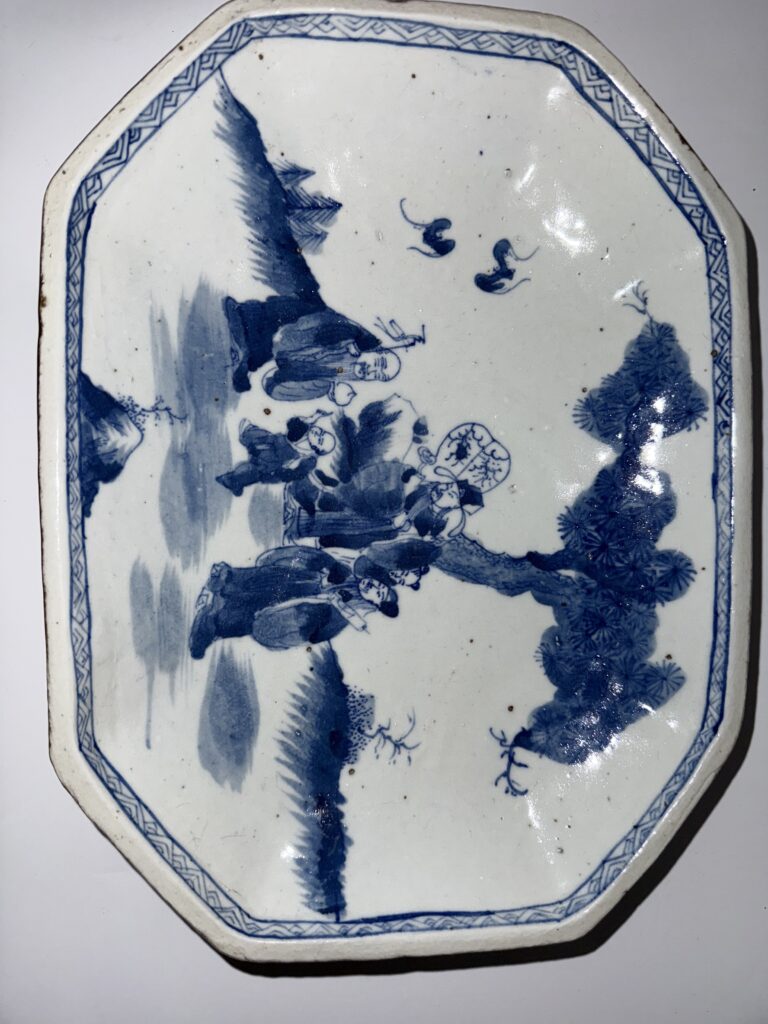
明末清初青花人物山水纹八方盘 | 清代早期青花瓷典范 传世雅藏
【藏品概述】
本品为明末清初时期青花人物山水纹八方盘,属清代早期青花瓷经典之作。器物呈规整八边形,胎质坚致,釉面温润,青花发色沉稳典雅,纹饰布局疏密有致,集实用与艺术价值于一体,见证了明末清初制瓷工艺的传承与演变,为东方古典美学收藏之珍贵实物。
【器型解析】
-
八方造型:盘体呈标准八边形,边角线条柔和不失硬朗,体现”八方来财””八面玲珑”的传统吉祥寓意。器型周正,口沿微外撇,底足平实,尽显明末清初制瓷工匠对器型比例的精准把控。
-
尺寸比例:整体造型端庄稳重,既无过大之笨拙,亦无过小之纤弱,适合案头陈设或博古架展示,于细节处彰显古人”致中和”的审美追求。
【纹饰鉴赏】
-
边饰:盘沿一周以几何回纹为饰,线条细密规整,回环往复,寓意吉祥绵延,为典型清代早期辅助纹饰,凸显层次感。
-
主题纹饰:盘心绘山水人物图景,远山近石以青花分水技法表现,浓淡相宜,层次分明。画面中人物衣袂飘逸,或坐于松下畅谈,或立于山间远眺,神态生动,颇具文人雅士”寄情山水”的闲逸意境。旁有苍松挺立,枝干遒劲,松针繁密,象征长寿坚韧;空中飞鸟灵动,为静谧山水增添生气,整体构图主次分明,意境悠远。
【工艺特点】
-
胎釉特征:胎质细腻坚致,胎色白中微泛米黄,属明末清初典型”糯米胎”特征。釉面白中闪青,温润如玉,釉层厚薄均匀,局部可见自然形成的细小棕眼,为传世古瓷自然老化之证。
-
青花工艺:采用传统钴料绘制,青花发色浓淡兼具,浓处色泽沉稳,淡处晕染自然,体现”墨分五色”的绘画效果。笔触流畅有力,人物衣纹、山水皴法均具明末清初青花”分水皴”的典型技法特点。
-
烧制工艺:从釉面光泽及胎釉结合处可见,本品经高温一次烧成,胎釉结合紧密,无剥釉现象,足见当时窑温控制之精准。
【历史背景】
明末清初为中国青花瓷发展的重要转型期,此时制瓷工艺在继承明代晚期风格基础上,逐渐形成清代早期的新风貌。本品山水人物纹饰受当时文人画影响,注重意境营造,青花发色与纹饰布局均体现了这一过渡时期的典型特征,为研究明末清初社会文化及审美趣味提供了珍贵的实物资料。
【收藏价值】
-
年代价值:历经数百年传世,保存状态良好,为明末清初青花瓷断代研究的标准器之一。
-
工艺价值:集造型、绘画、烧制工艺于一体,展现了古代工匠的高超技艺与艺术创造力。
-
文化价值:纹饰中蕴含的山水情怀、人文意境,是东方传统文化精神的直观载体,具有深厚的文化内涵。
-
陈设价值:既可作为古董收藏,亦可置于书房、客厅陈设,为空间增添古典雅韵,彰显主人文化品位。
【藏品状态】
作为传世古瓷,器物表面可见自然使用及老化痕迹,如细小棕眼、轻微磨损等,均属正常现象,不影响整体美观与收藏价值(具体细节请参见图片)。
【收藏建议】
-
建议作为陈设展示,避免实用功能,以保护文物完整性。
-
存放于温度湿度适宜的环境,避免阳光直射及剧烈温差变化。
-
清洁时使用柔软干布轻拭,避免使用化学清洁剂。
本品承载着明末清初的历史记忆与东方美学精神,是连接古今的文化桥梁,诚邀独具慧眼的藏家品鉴珍藏。

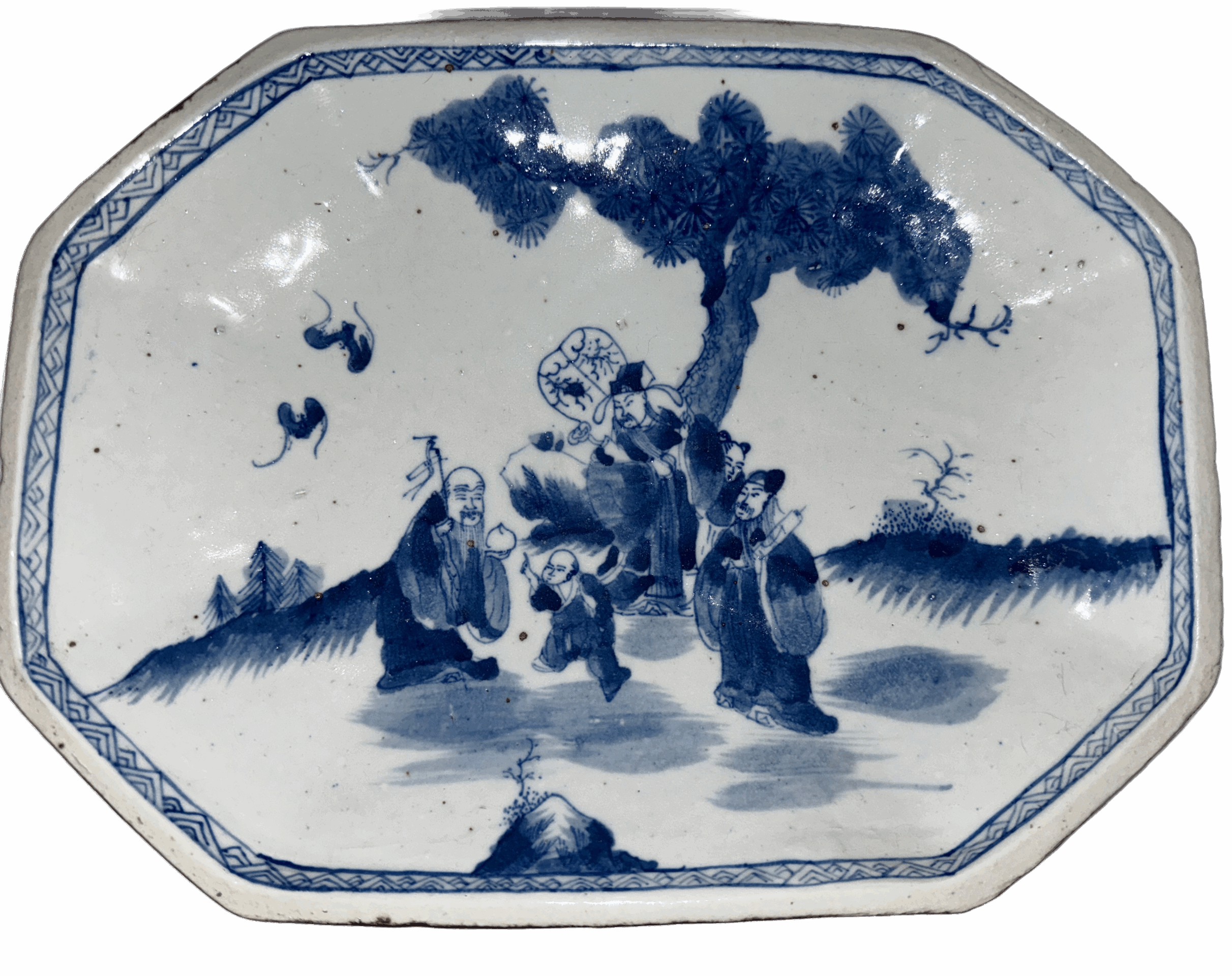
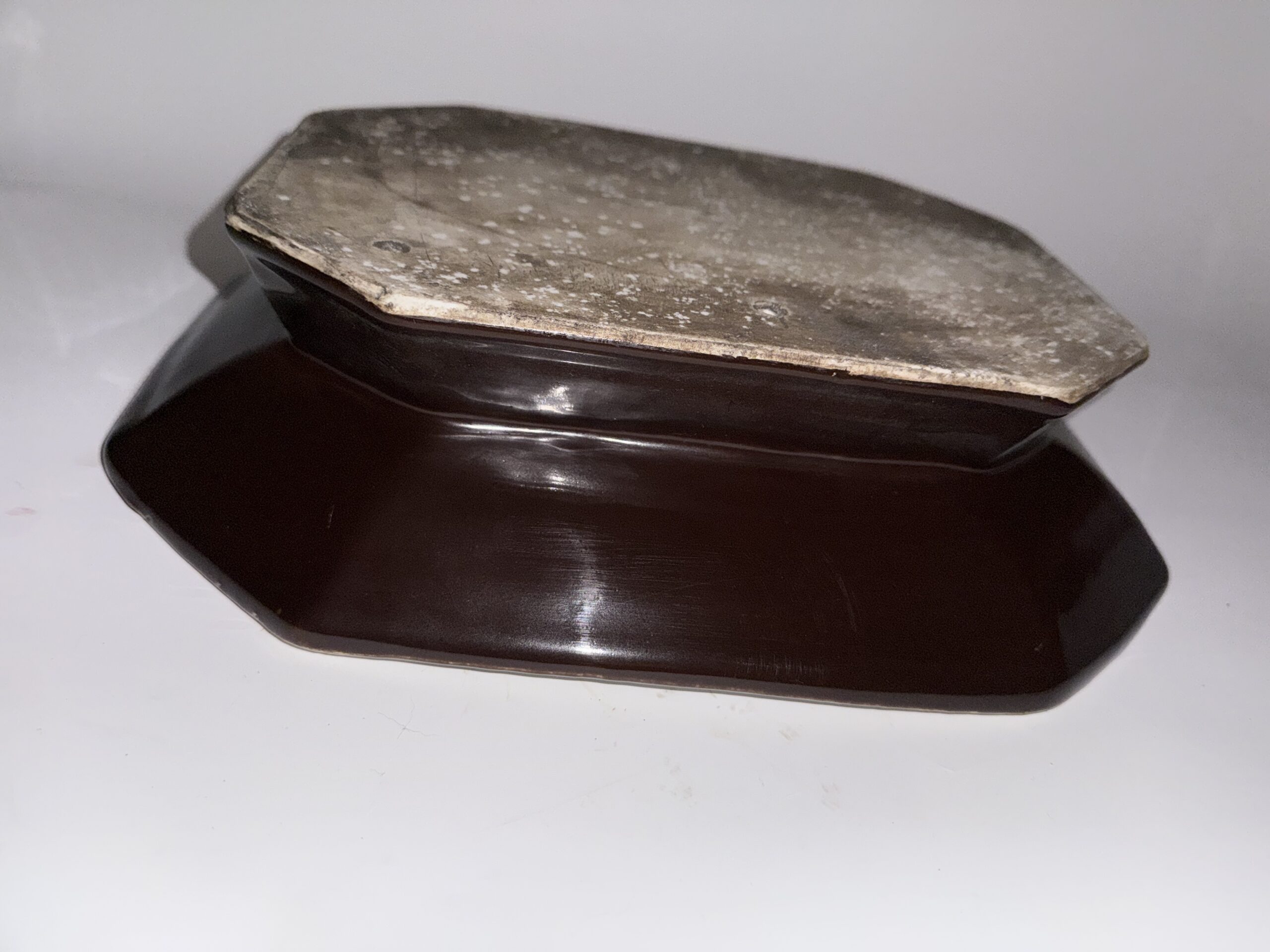
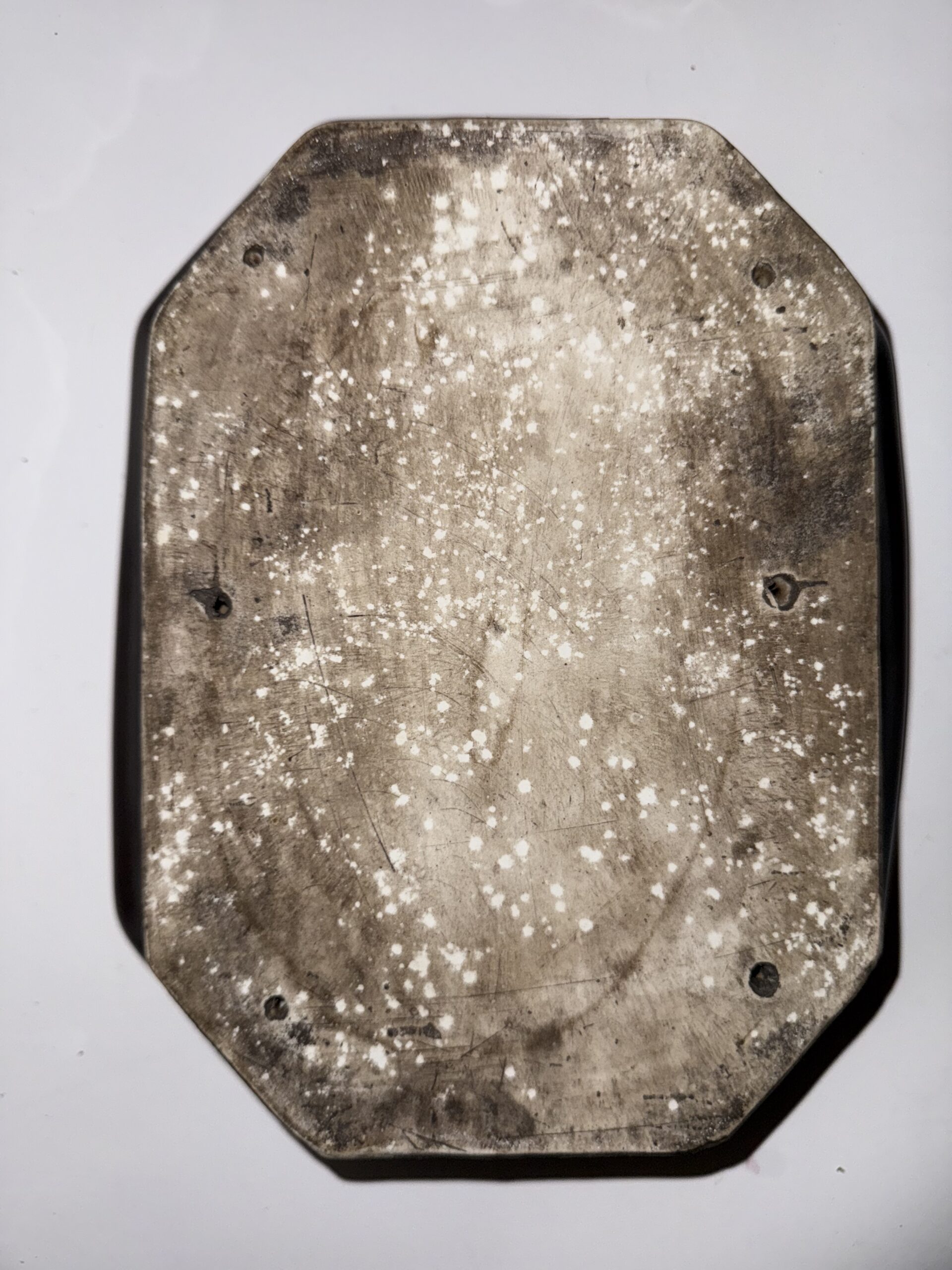
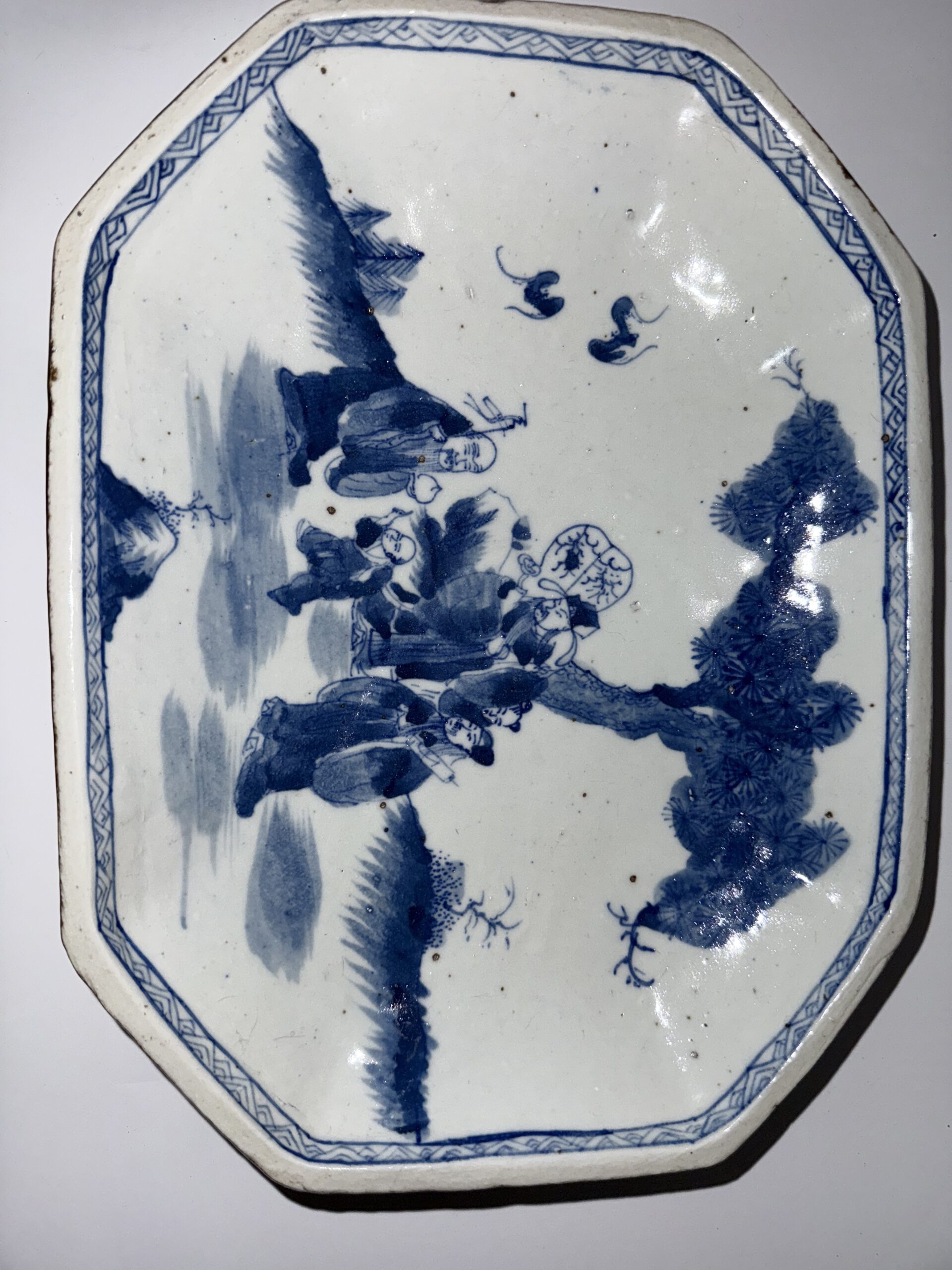

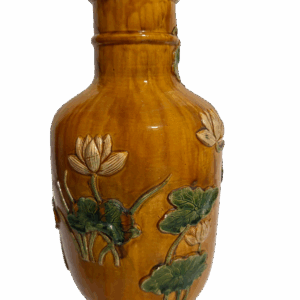
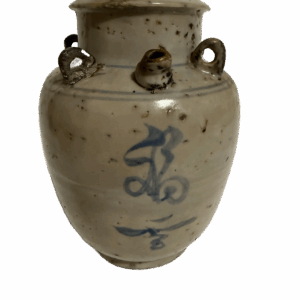
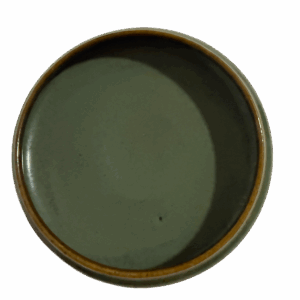
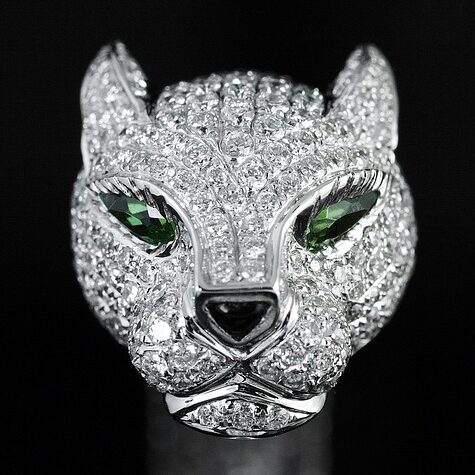
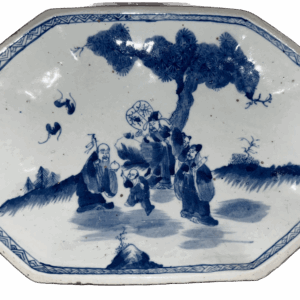
Reviews
There are no reviews yet.